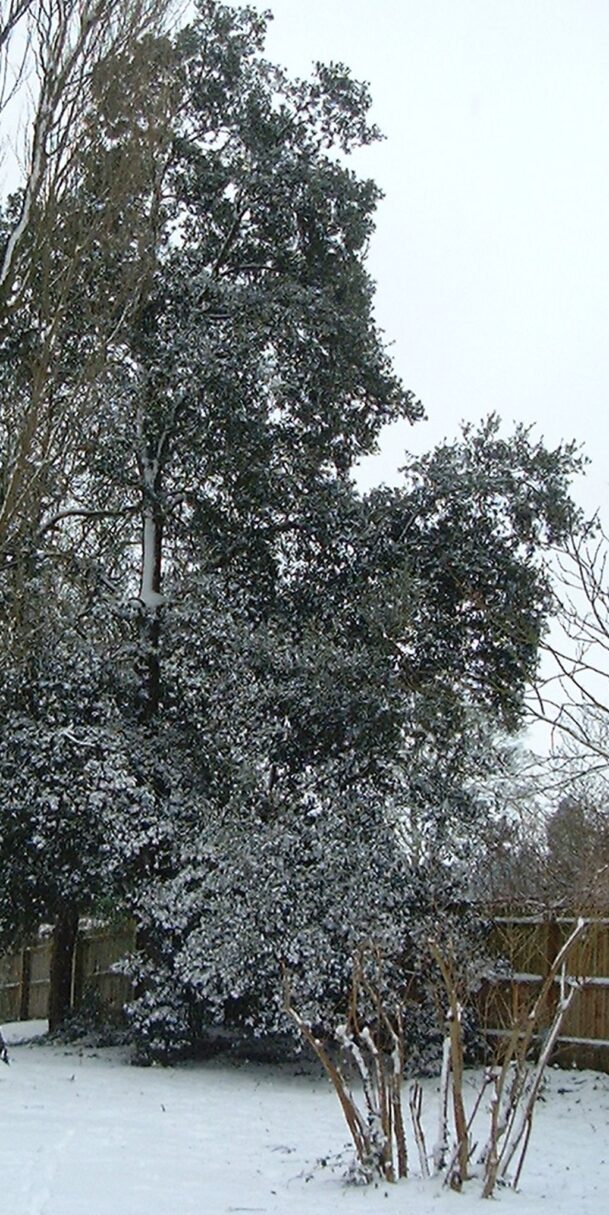#90 HOLM OAK
Quercus ilex

Planted: 1913
View On MapThis tree is to the left of the summerhouse near the Edward road fence
| Distribution: | Mediterranean region & south-west Europe | ||
| Planting Date: | 1913 supplier unknown | ||
| Growth Habit: | Large majestic evergreen tree with rounded head of branches, ends of which become pendant with age. | ||
| Bark: | Blackish, crazed and cracking into small squares | ||
| Leaf: | New leaves sprout bright green, downy and toothed, becoming leathery, dark and glossy above with greyish felting beneath. Leaves entire or slightly toothed, variable size and shape depending upon age. Leaves elliptic to narrowly ovate, up to 7.5 cm long | ||
| Flowers: | Drooping yellow male catkins in June with inconspicuous female flowers on same tree. | ||
| Fruit: | Acorns, long and sharp pointed, 2 cm with felted cup scales. Not particularly flavoursome, used mostly for grazing animals | ||
| Potential tree size: | 30 m | ||
| Uses: | Hardwood used for handles and poles. Coppiced for firewood and charcoal. Planted in pasture land to allow stock to enjoy browsing on acorns as they fall into the grass. Resistant to salty coastal winds, used for seaside hedging. | ||
| Introduction Date: | Cultivated in England since late 16th Century. | ||
| From Mr Hammond’s Planting Book: | Just under 2 m when planted in 1913, this tree was damaged by a horse in June 1915. The 1916-1917 “Great Frost” damaged leaves, and the -18°C frost of 13 December 1920 killed all the leaves and damaged the leading shoot, reducing the height from 4.43 m to 3.09 m. | ||